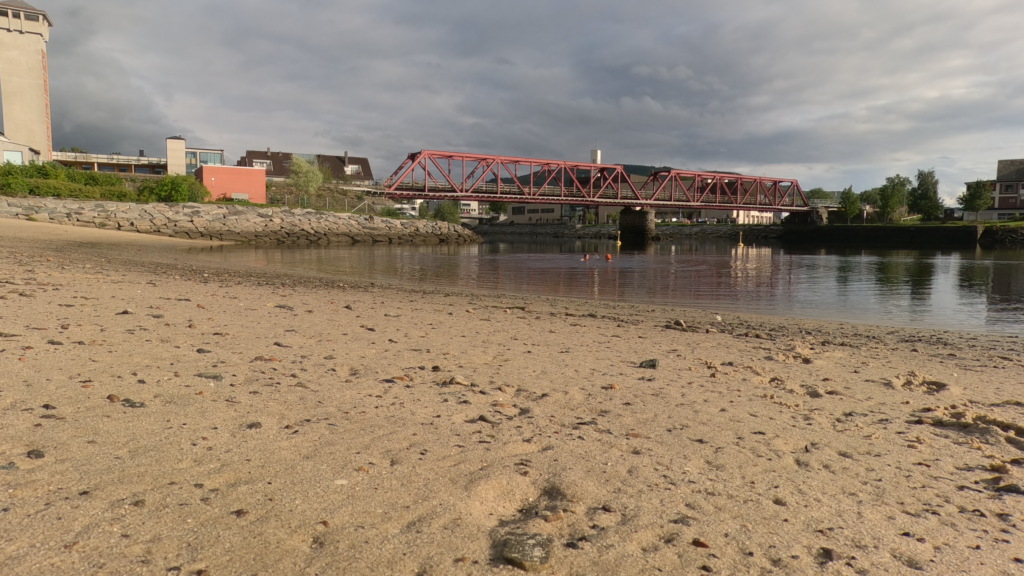Innermost, in the north-eastern corner of the Trondheim fjord, lies Steinkjer, the county capital of Trøndelag. The name comes from the word ‘stein’ meaning stone plus ‘kjer’, from Norse (bridge) fundament or dam. The town, which has had city status since 1857, has 12,000 inhabitants and is well situated between the outlets of the rivers Steinkjerelva and Figgja. Many of the surrounding villages have fertile soil, on former maritime seabeds, and the town grew up due to trade of forest and agricultural products, hence the nickname ‘City of the Contryside’.
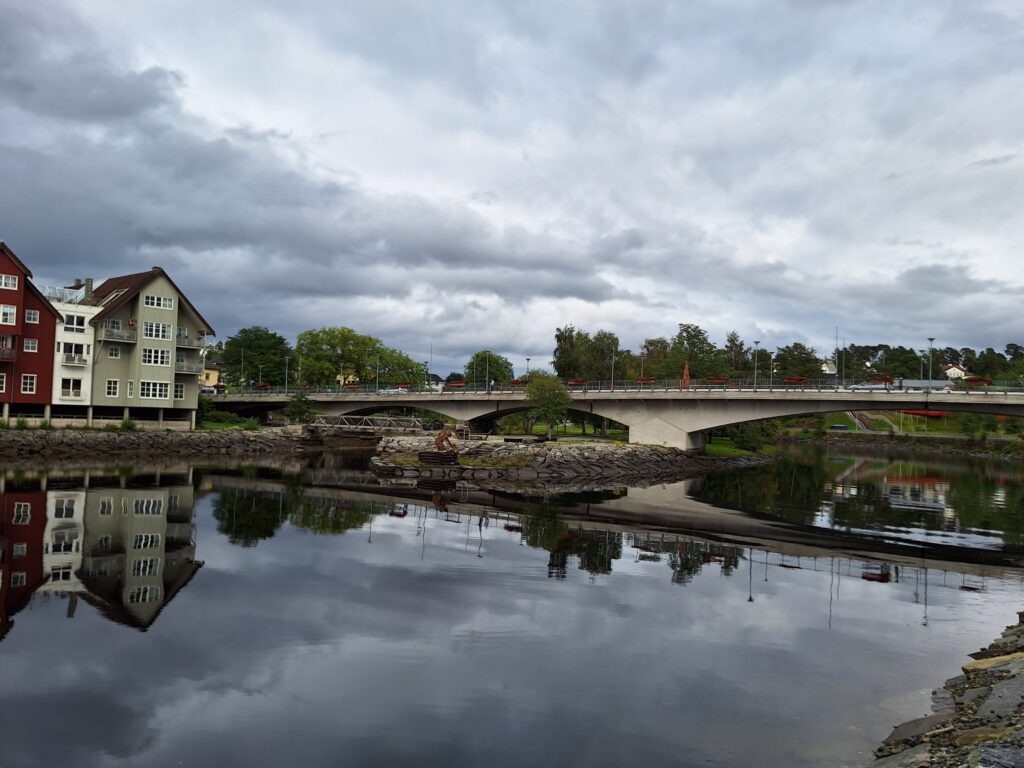
Many ancient monuments have been found in and around Steinkjer, both petroglyphs, burial mounds, stone circles and bauta stones (the stone in the name Steinkjer seems to mark an interest in stone that has lasted thousands of years). When we went swimming on September 2nd 2023, we joined the opening of Steinkjer’s new cultural center, including a special exhibition called ‘Heim’ meaning ‘Home’. The point is to return to the municipality finds that have long been stored elsewhere, including at the Science Museum in Trondheim. One of the ‘objects’ in this first exhibition was a burial site from around 1500 BC (early bronze age). The burial site was inside a circular wall inside a 14 meter high stone pile at Frøset in Steinkjer municipality, which was opened in 2002 in connection with road works. The burial site contained burnt bone remains from animals and a child under the age of 10. The burial site must have been clearly visible from the sea in the Bronze Age (sea level 15 m higher than today), and the location was hardly accidental, especially when you know that sand from the beach was transported to the burial site and placed in the grave.
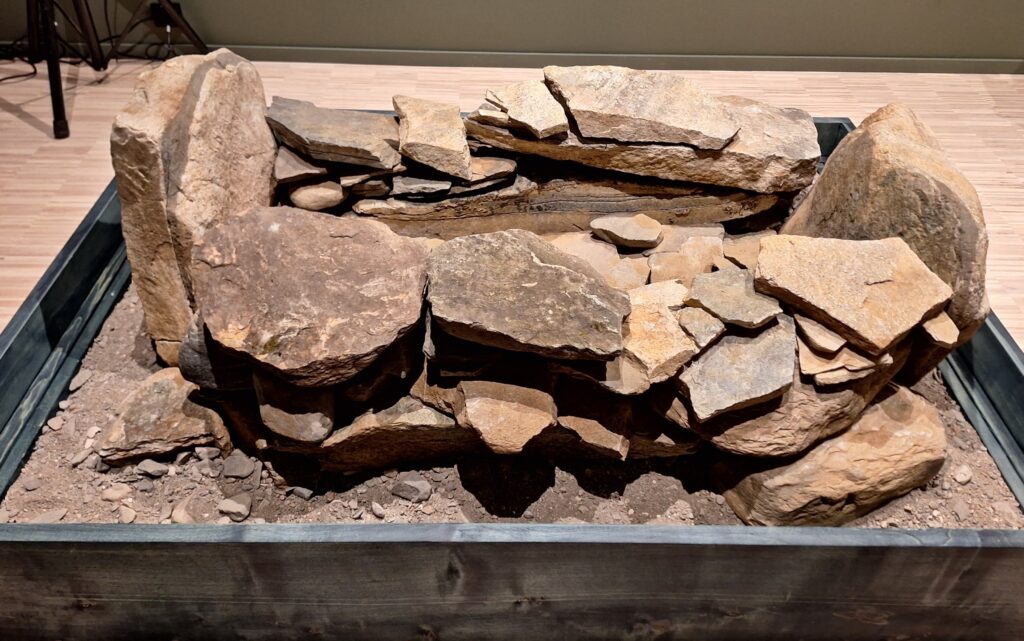
‘Heim’ has since been upgraded, and a new and larger exhibition opened in June 2024. From the cultural center you have a beautiful view of the Steinkjer River. There has been large-scale housing construction here in the 2000’s. Saying that, there are indeed very few old buildings in Steinkjer, after massive German bombings on 21/8-1940, where 80% of the building mass was destroyed.
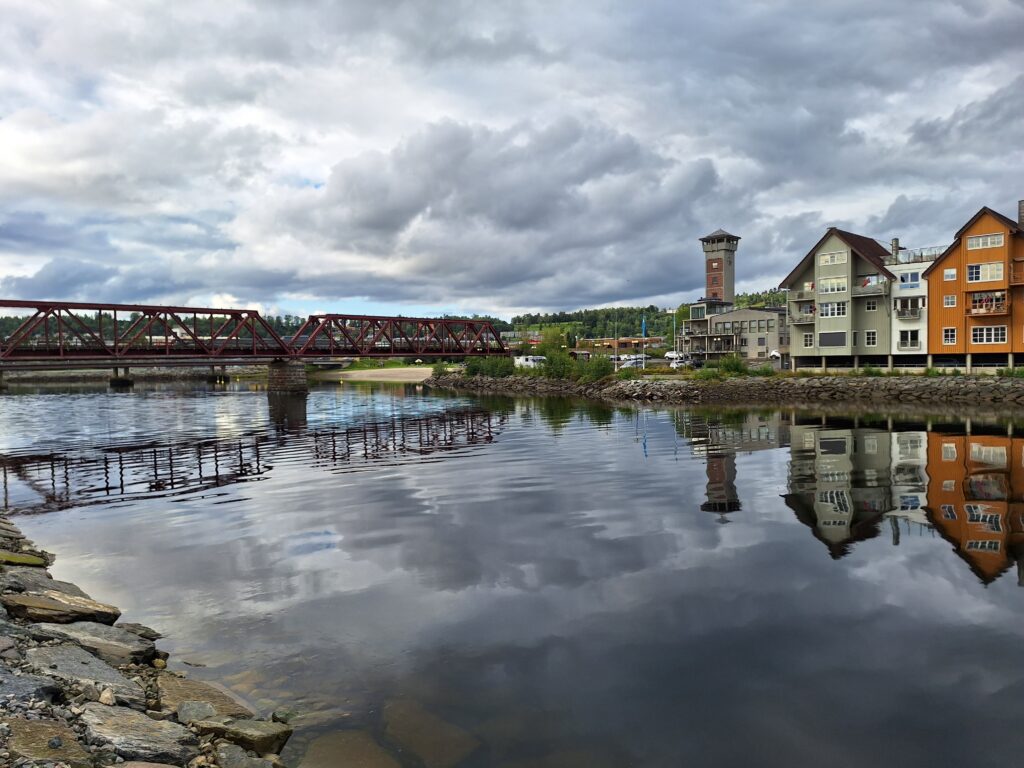
On the north side of the outlet of the Steinkjer River, from the 17th century there were sheds and boathouses for storing agricultural goods awaiting shipment. Timber was also stacked here. The buildings and quay disappeared during WWII, but the area retained the name Naustvollen. In 2014, the river bank was covered with beautiful white shell sand from Ytre Namdal. And sim sala bim, that’s how you get a completely new city beach. This is a really nice place indeed!
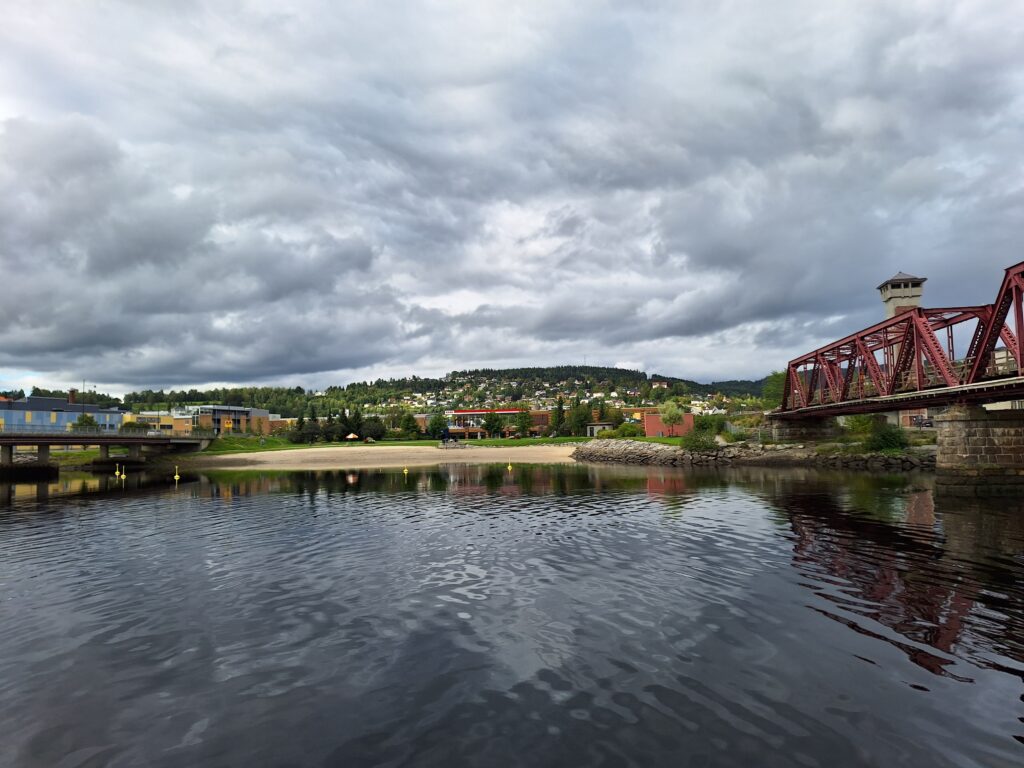
In 2024, new sand will be covering the beach. The city beach has become very popular, and measures to retain the bathing spot have been well received. A bath from the city beach in Steinkjer is perfect, also if you are only passing by.
